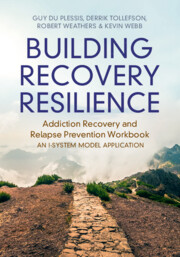 Building Recovery Resilience
Building Recovery Resilience Book contents
- Building Recovery Resilience
- Building Recovery Resilience
- Copyright page
- Contents
- Introduction
- 1 Dealing Effectively with High-Risk Situations
- 2 Coping with Cravings and Triggers
- 3 You Can’t Fix What’s Not Broken
- 4 Break the Addiction Cycle
- 5 The Requirements That Bind Us
- 6 Your Recovery Resilience Practice
- References
- Notes
- Index
5 - The Requirements That Bind Us
Published online by Cambridge University Press: 28 May 2024
- Building Recovery Resilience
- Building Recovery Resilience
- Copyright page
- Contents
- Introduction
- 1 Dealing Effectively with High-Risk Situations
- 2 Coping with Cravings and Triggers
- 3 You Can’t Fix What’s Not Broken
- 4 Break the Addiction Cycle
- 5 The Requirements That Bind Us
- 6 Your Recovery Resilience Practice
- References
- Notes
- Index
Summary
In this chapter there is a focus on the expectations or Requirements that sustain an addictive lifestyle. It highlights that in addition to fueling resentments, Requirements also affect how one relates to potential high-risk situations, triggers, and stressful events in general. Chapter 1 of this workbook highlighted that oftentimes it is not the situation or event itself that creates emotional distress, but the Requirements individuals have (often automatically and out of awareness) for the situation or event that activate their I-Systems. Thus, a Recovery Resilience Practice does not focus on changing any given situation (crucial insofar as many distressful situations or triggers may be unavoidable) but focuses instead on changing the “who” one brings to that situation – the Natural Functioning self or I-System Functioning self.
Keywords
- Type
- Chapter
- Information
- Building Recovery ResilienceAddiction Recovery and Relapse Prevention Workbook – An I-System Model Application, pp. 129 - 159Publisher: Cambridge University PressPrint publication year: 2024
